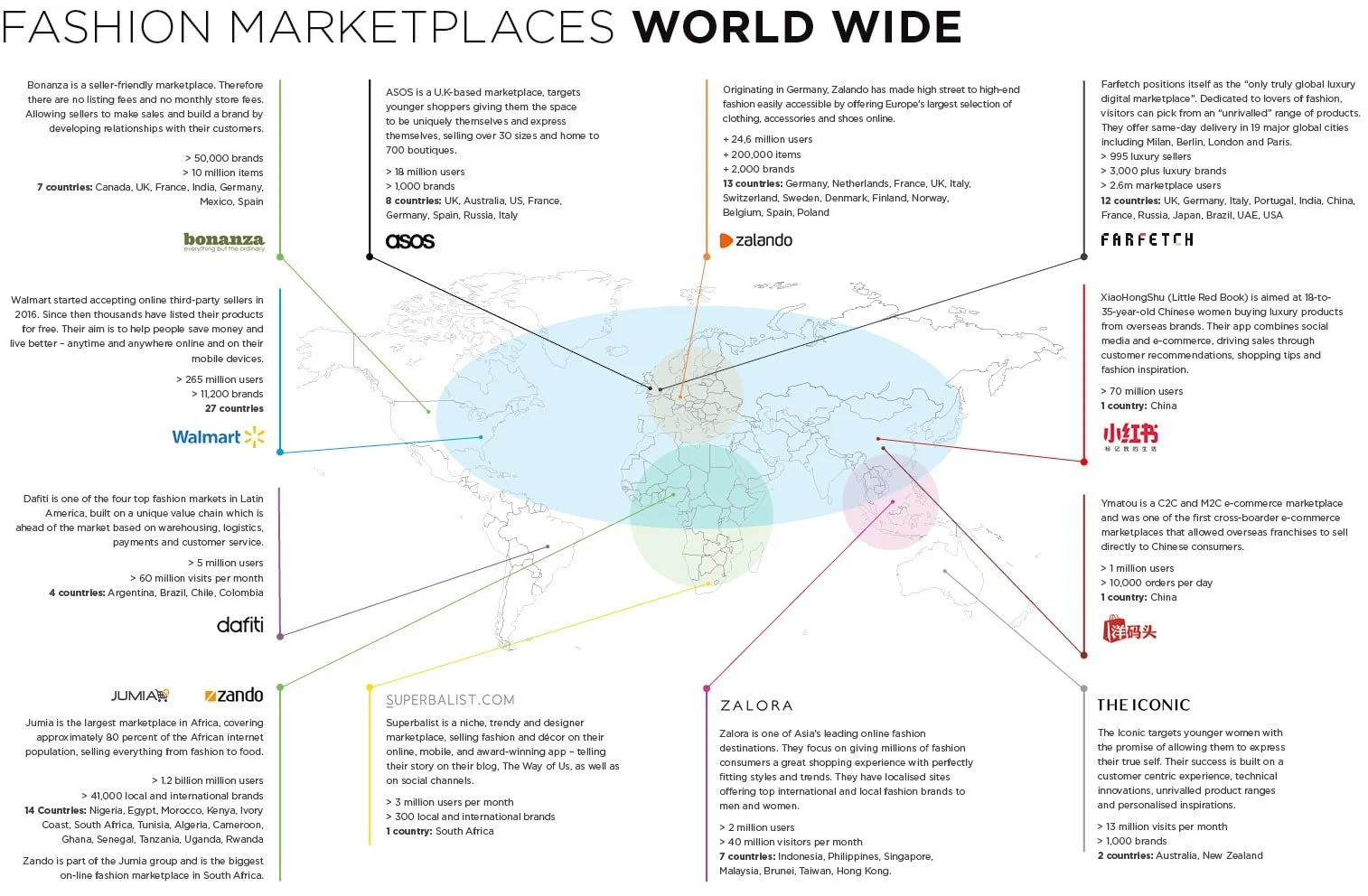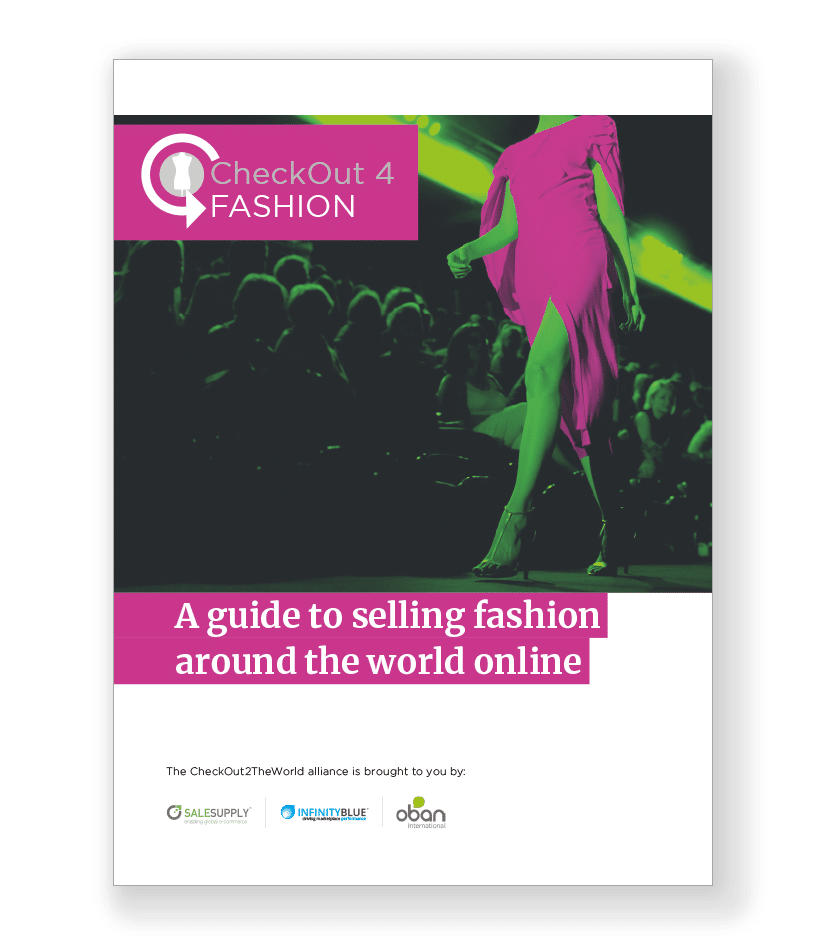WHY SELL ON FASHION MARKETPLACES
Globally, almost 50% of online retail sales take place on marketplaces and sales grew by 34% last year to $1.55 trillion. The increasing dominance of marketplaces is also evident in e.g. the fact that online shoppers in the USA are more likely to start a search for a new purchase on Amazon than Google.
What all marketplaces have in common is that the product or service information is provided by multiple third parties, while the transactions are processed by the marketplace operator. Marketplaces usually charge a fixed fee and a percentage fee and many now offer additional services like fulfillment and financing. As such marketplaces offer a fantastic eco-system of solutions for online retailers
Some marketplaces have become retailers in their own right, next to facilitating the sales of third parties. Others like eBay are designed to work on an auction basis and allow individuals to sell used or unwanted items, as well as enabling shops to sell new products. Amazon, Tmall, bol.com, Fruugo are generalists in the sense that they offer a wide range of products. Others specialise in market segments like ManoMano (DIY and home improvement), or Farfetch, Mr. Porter and Zalando in fashion.
Customer research shows that customers choose marketplaces when they are looking for a range of choice, ease of comparing items and convenience of looking in a single place. They also benefit from only having to sign-up once, fast checkouts and insurance against items that do not match their descriptions or fail to be delivered. This in contrast to other customers who prefer purchasing directly from brand websites because they have strong brand loyalty and trust, want to take advantage of loyalty programmes, and are looking for the top end customer experience that some brands offer.
There is no doubt that marketplaces somehow flatten the customer experience for each brand. Marketplaces will always be more interested in promoting their brand than yours. But those platforms are continuously innovating, e.g. Amazon adding Brandshop, and Tmall setting up Luxury pavilions. Other more fashion specialist platforms like Farfetch, Mr. Porter and Zalando are now including social media and content as part of their positioning and marketing activities, both off and on platform – creating much-improved appeal for both fahion-istas and fashion retailers.
Why should you consider using a marketplace?
Access an additional route to market – the benefit of opening up a second or third route to market will depend on many things, but in some countries marketplaces represent over 85% of online B2C purchases
Export with ease – when expanding into new countries, you will only need to translate and localise the product copy for new marketplaces, without worrying too much about the complexity of customer delivery and returns
Protect your band – brand registry (or the non-Amazon equivalent on other marketplaces) will ensure sellers that sell your products comply with your listing and brand standards. You can do this even if you do not intend to sell yourself.
Which marketplaces should I choose?
Any discussion on specific marketplaces needs to start with Amazon and Alibaba, behemoths of online retailing. Amazon is dominant in the USA and the EU (and barely touches China) while TMall’s dominance in China is even more substantial. TMall provides more opportunities for branding than Amazon. It is also much more focussed on the overall e-commerce ecosystem (including working closely with brick and mortar retailers). For now, the threat of Amazon and Tmall to fashion brands depends mostly on the type of apparel in question. Amazon customers for instance, when buying fashion largely buy underwear, socks, jeans and workout clothes.
Both super-marketplaces are experimenting with fashion and luxury products. Tmall launched the Tmall Luxury Pavilion, offering its shoppers access to dozens of brands including Burberry, Hugo Boss and La Mer. Amazon is developing its own private labels, offering a testing service known as Amazon Wardrobe, which allows users to have items delivered to their homes in order to try them on and either keep or return. Amazon is also rumoured to be working on an automated clothing factory that uses personal preference data to create personalised tailormade clothing.
There are at least 250 dedicated fashion marketplaces that are regularly discussed, including Farfetch, Mr. Porter, Net-a-Porter, Asos, Zalando, Bonobos, The Iconic and Poshmark. They differ in geography, audiences, brand protection, on-platform marketing and promotional possibilities, integration with social media, key opinion leaders etc.
For more information on marketplaces, including practical tips on how to overcome challenges and make the most of opportunities, see our guide, ‘You can export: Set-up and sell successfully on Global Marketplaces’.
Or for more information on selling fashion around the world online check out our guide to selling fashion around the world, click here
Cover photo by Andrew Neel on Unsplash


